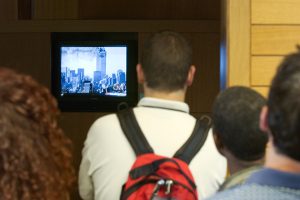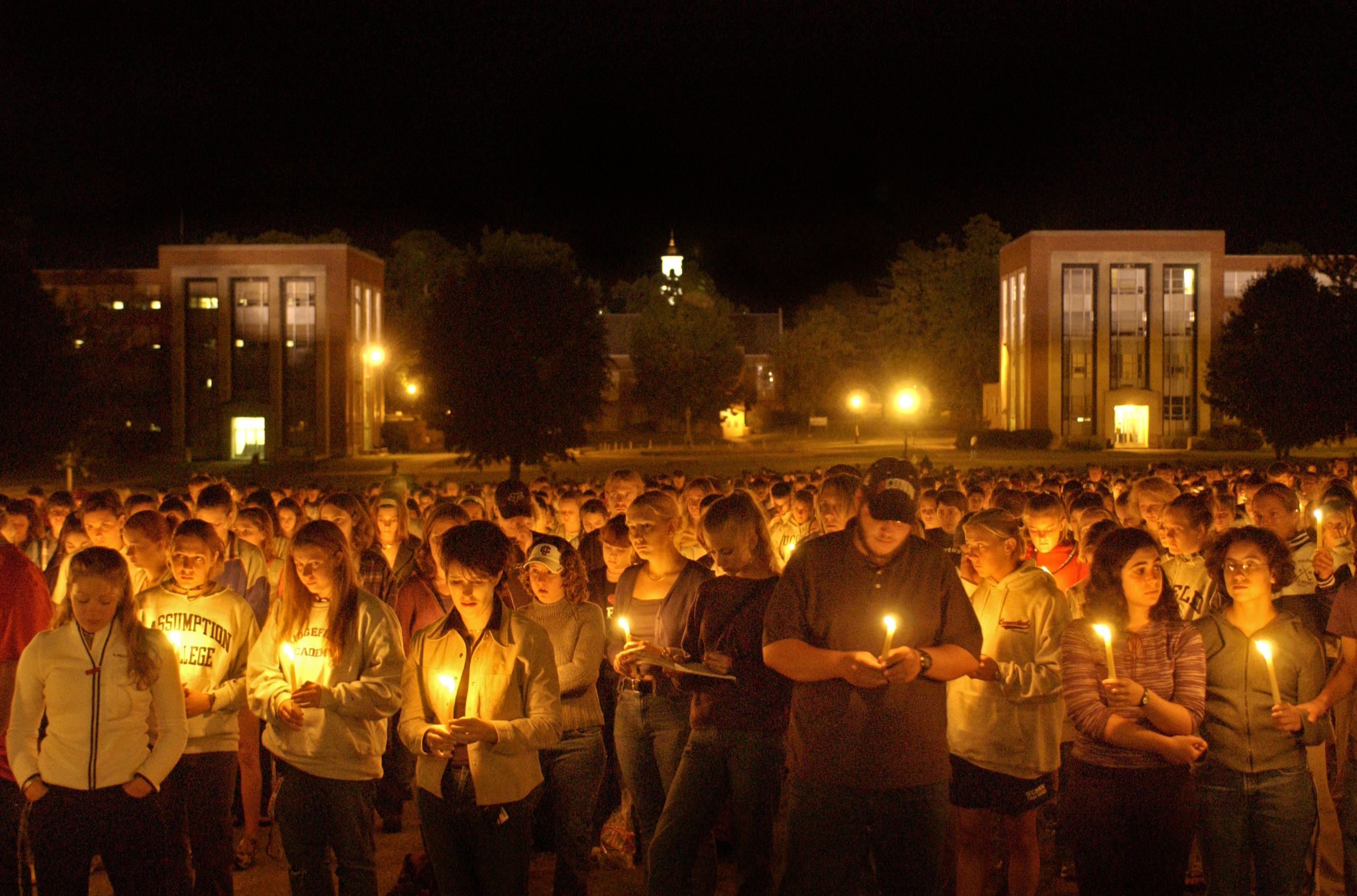For the 18-year-olds in the Class of 2024 who started coursework last week, the terrorist attacks of Sept. 11, 2001 constitute an event whose reverberations are still being felt, but which can only be glimpsed through the lens of history, rather than personal experience.
This feels almost inconceivable for those who can effortlessly recall where they were on that Tuesday morning 19 years ago, for whom the shock and pain of that morning is still raw, regardless of the passage of time.
At UConn, like places around the world, people crowded television screens in public areas as the news from New York City, Washington D.C., and Pennsylvania arrived. At UConn Storrs, the televisions in the Student Union were so crowded that additional screens were set up in the ballroom and in the Dodd Center. Similar scenes played out on every other campus.
UConn Stamford, barely 40 miles from Ground Zero in Manhattan and with strong ties to the city, was particularly shaken.
“On campus, there is not one person who doesn’t know someone who worked in the World Trade Center,” then-campus director Jackie Joseph Silverstein said at the time. “It has been horrendous waiting to know what happened to individuals.”

This was a time before social media and widespread access to WiFi, when mobile phones were barely useful for making calls, and the news media was the only source of real-time information from the scenes of the attack. Phone lines were jammed as people from around the world tried to reach loved ones in New York. Some parents called the University to ask that students be sent home; others called to ask the opposite, reasoning that campus seemed safer at a time when the notion of “safe” had been altered forever.
Over and over, accounts from that morning use the word “stunned,” with the organization of a candlelight vigil not happening until Wednesday night, simply because no one could imagine doing anything on Tuesday night besides watch the news in shocked silence.
But not every part of the community was immobile. An emergency medical services tactical team left UConn Health hours after the planes struck New York, and had reached Ground Zero by 6 p.m. that day. Counselors with what is now Counseling and Mental Health Services were busy all day and long into the night. ROTC students and reservists prepared to be called up to duty.
“We will remember 11th September 2001 for the rest of our lives,” Undergraduate Student Government President Chris Hattayer told a crowd of 3,000 at the vigil the following night. “And it may turn out to be the defining moment of our lives.”
In the days that followed, the UConn community responded in ways that showed the depth and breadth of a great public university: faculty members lent their expertise on matters from civil engineering to human rights; the School of Fine Arts staged three performances of Mozart’s Requiem to more than 5,000 people, generating roughly $31,000 for relief efforts; staffers raised money for bottled water and ferried it to crews working around in the clock in the rubble of the World Trade Center; and in classrooms, residence halls, and common spaces, students attempted to understand what had happened, to apply their learning and critical thinking to the unimaginable, and to try and predict what would come next.
Today, the rubble is gone, “what comes next” has been answered for better and for worse, and the undergraduates of fall 2001 are now firmly within the demographic confines of middle age. A memorial service will be held at UConn Health, as one has been held every year since that emergency response team set off 19 years ago; lessons from 9/11 – as it has come to be universally known – will be taught in a myriad of courses; and students who were very young on that day, or who hadn’t been born at all, may wonder what it was like on that Tuesday morning in September, when everything in the world changed all at once.
And for thousands, or tens of thousands, the day will bring renewed sharpness to a pain that may dull with time but which never fully leaves, and their thoughts will not be on world history or geopolitics, but on someone they once loved, gone forever.
Ultimately, today is a day of grieving, and there is no more fitting thing to do on a fair morning in September than to recall the members of the UConn community who died that day, and to keep sacred their memories:
Richard “Rick” Blood Jr. ’97
Evan Gillette ’83
Robert Higley ’94
Joseph A. Lenihan ’82, ’84 MBA
Scott J. O’Brien ’83
Margaret Q. Orloske ’73
Cheryl Monyak ’79, ’81 MBA
Sean Schielke ’96



